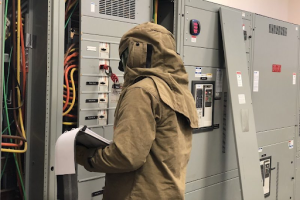Water is one of the most vital resources for life, industry, and agriculture. However, raw water often contains impurities such as suspended solids, organic matter, and pathogens that must be removed before it can be used safely. One of the most critical components of any water treatment system is the water clarifier. Whether used in municipal plants, industrial operations, or wastewater facilities, these clarifiers play a central role in improving water quality.
In this blog post, we’ll explore why water clarifiers are crucial to any water treatment process. Let’s dive in!
1. Enhancing Solid Removal Efficiency
Water clarifiers are designed to efficiently remove suspended solids from water. These solids, which may include silt, clay, algae, and organic particles, reduce water quality and can interfere with downstream processes. Clarifiers work by promoting sedimentation — the natural process by which particles settle out of water due to gravity. This results in a cleaner, clearer liquid that is easier to treat further. Without clarifiers, water treatment systems would struggle to meet quality standards or would require much more energy-intensive and expensive filtration methods.
2. Reducing Chemical Consumption
Clarifiers can significantly reduce the need for chemical additives in the treatment process. When suspended particles are removed mechanically through clarification, there is less need for coagulants and flocculants, which are typically used to bind particles together for removal. This decreases the cost of treatment and the environmental impact of discharging treated water. Reducing chemical use also makes the process safer for operators and contributes to more sustainable operations.
3. Improving Overall System Performance
By removing solids early in the treatment process, clarifiers lessen the load on subsequent equipment such as filters, membranes, and chemical treatment units. When fewer solids reach these components, they last longer, perform more efficiently, and require less maintenance. This not only lowers operational costs but also minimizes the risk of breakdowns and service interruptions. Water clarifiers, such as those offered at Air Crop, effectively serve as the first line of defense, setting the stage for smoother and more reliable performance throughout the entire treatment system.
4. Supporting Regulatory Compliance
Governments and environmental agencies have strict standards for water quality, whether the water is being released into natural bodies or distributed for human consumption. Clarifiers help treatment facilities meet these standards by effectively removing pollutants that can lead to violations. High levels of turbidity, biological oxygen demand (BOD), or total suspended solids (TSS) can result in fines, shutdowns, or reputational damage. By using clarifiers, treatment plants are better equipped to maintain compliance and avoid costly penalties.
5. Protecting Downstream Ecosystems
In wastewater treatment, the discharge of untreated or poorly treated water can severely impact the environment. Clarifiers help prevent the release of harmful substances into rivers, lakes, and oceans by ensuring that pollutants are removed before water is discharged. This protects aquatic life, maintains biodiversity, and supports clean water for communities and wildlife. By serving as a safeguard between industrial or municipal processes and the natural world, clarifiers play a crucial role in environmental stewardship.
6. Extending Equipment Lifespan
Water that contains a high level of particulates can be abrasive and corrosive, wearing down pumps, pipes, and other treatment infrastructure. Clarifiers reduce this wear and tear by removing abrasive particles before they can cause damage. Over time, this leads to longer-lasting equipment, fewer repairs, and less frequent replacements. Investing in high-quality clarification technology can therefore save money over the long term by preserving the integrity of an entire treatment system.
Water clarifiers are not just useful — they are essential to the success of any water treatment process. By improving solid removal efficiency, reducing chemical needs, enhancing system performance, supporting regulatory compliance, protecting ecosystems, and extending equipment lifespan, clarifiers contribute to operational effectiveness and environmental responsibility. As water scarcity and quality challenges continue to grow, the importance of effective clarification will only become more pronounced.







